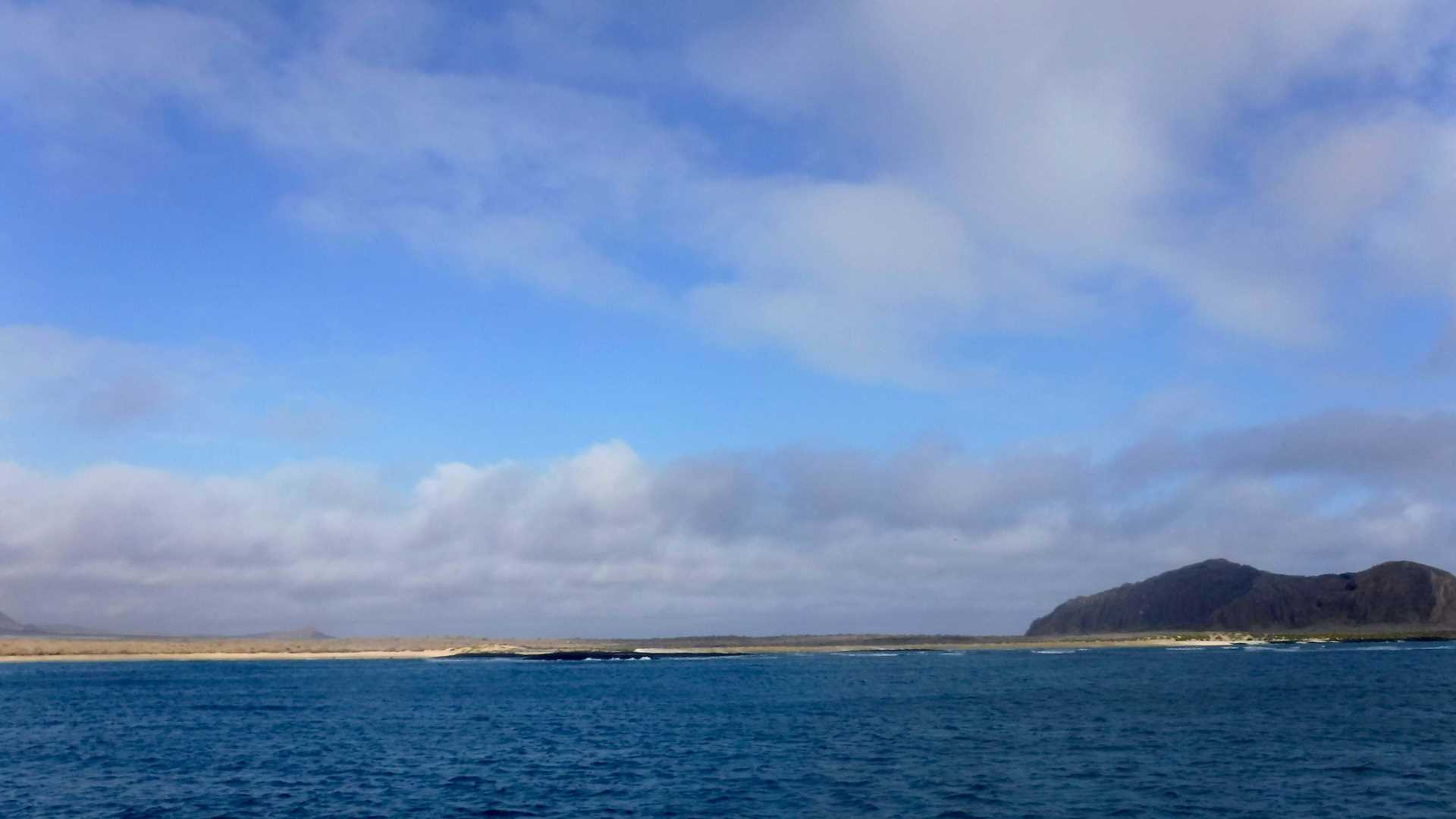It is a new beautiful day aboard the National Geographic Endeavour II and a new island to visit and explore. Today we woke up in San Cristobal Island, the administrative capital of the Galapagos Islands and one of the oldest islands of the Archipelago with about 3.2 million years. It is also one of the five inhabited islands of the Galapagos with around 8.000 people.
After another delicious breakfast aboard, we disembarked on Punta Pitt welcomed by playful juvenile sea lions who rest on this beach after long hours of chasing fish to feed in the ocean. We started the hike in Punta Pitt with an uphill walk along the beautiful trails and walls of eroded tuff formations, where we could observe interesting geology craved by waves and wind. Once at the top, we could appreciate the stunning view of the beach and as we were contemplating the view, a male blue-footed booby caught our attention, as he was only a few meters away and displaying courtship behavior sky pointing his bill and tail and opening his wings while proudly showing his bright blue feet.
As we continued the walk, we saw and photographed various blue-footed boobies nesting as well as our very first spotting of red-footed boobies. It was an overwhelming beautiful experience; everywhere you looked there was life or a beautiful view of the wild Galapagos landscape. Back from the hike guests have different options such as snorkeling with the playful sea lions, fish identification onboard the glass bottom boat and zodiac driving lessons for our young global explorers.
Back on board we had a delicious lunch buffet before our next and last Galapagos expedition aboard the National Geographic Endeavour II, the visit of Cerro Brujo. A breathtaking white sanded beach populated by a big colony of Galapagos sea lions who visit this beach often to rest and breed. It was a relaxing and perfect ending for a week full of excitement and adventure.
Back onboard, we said goodbye to the islands while contemplating an amazing sunset and circumnavigating around Kicker’s Rock. This, as every day on the Galapagos reminds us how precious these island are and how conservation could help protect places like this around the world.






